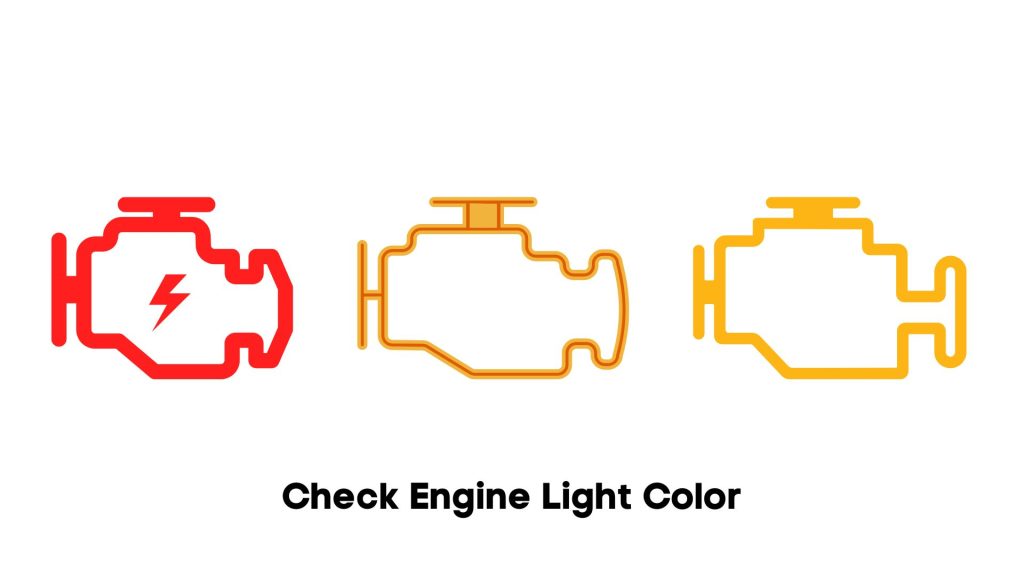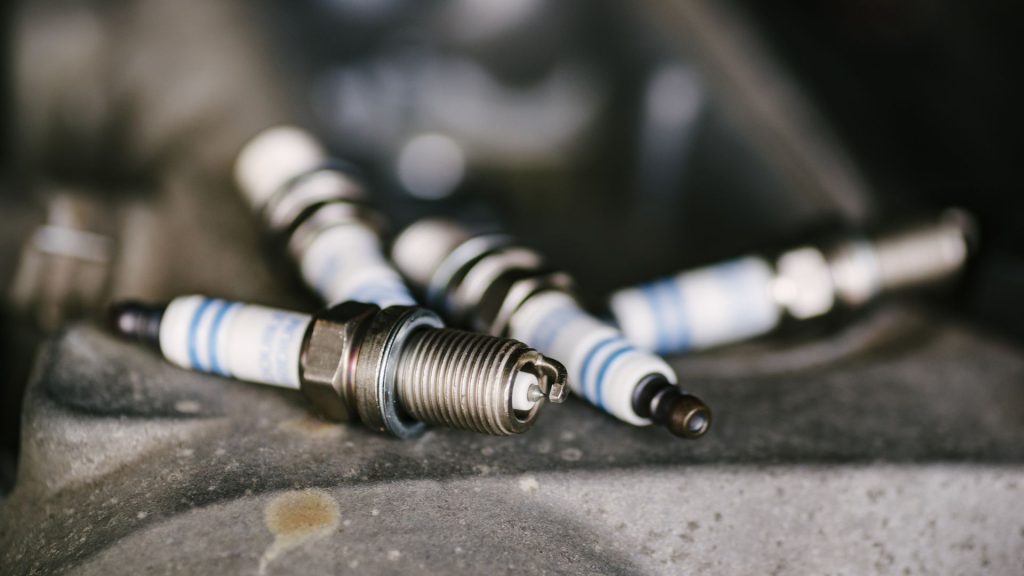The ‘Check Engine’ light looks like a silhouette of an engine. Don’t search for a particular color. Some lights are orange. Others are red. You also have amber indicators. Manufacturers are not obligated to use a specific color.

Check engine lights have been around since the 80s. The check engine light is part of the onboard diagnostic system. You see it when things go wrong. You should learn to differentiate between solid and flashing lights. A solid light points to a mild malfunction.
The diagnostic system has detected a fault. Take the vehicle to a repair shop at your earliest convenience to determine what went wrong. A flashing engine light appears when the car has a serious malfunction, the kind that cannot wait.
Where possible, you should park the car and call a tow truck. Otherwise, you risk doing irreversible harm to the engine. You cannot rule out low oil levels when a check engine light illuminates.
After all, the light works with a system that tracks the engine’s health; low oil levels have a direct impact on the engine. That being said, the dashboard has a separate icon that comes on in response to low oil levels and pressure. Therefore, you should concern yourself with that light, not the check engine indicator.
Exploring The Potential Link Between Low Oil Levels And The Check Engine Light
The check engine light works with the computer. The computer uses a network of sensors to ensure the engine maintains optimal operating parameters.
Therefore, it looks at components such as spark plugs and ignition coils that influence the engine’s ability to move the car.
The oil has a separate icon that comes on when the oil pressure drops. On the surface, low oil levels and the check engine light have nothing to do with one another. However, low oil levels are detrimental to the engine’s work.
Oil provides lubrication and prevents overheating. Low oil levels encourage metal-to-metal contact, which accelerates wear and tear. You can damage an engine in minutes if it runs without oil. If things get bad enough, the check engine light will come on. For instance:
- Low oil pressure causes rattling in the cam phaser. It affects the rate at which the inlet and exhaust valves open, which, in turn, causes an engine misfire. The computer will record the misfire and turn the check engine light on.
- Low oil levels produce a loss of compression because of the damage the seals and gaskets sustain. The computer will respond to this condition by flashing the check engine light.
- Low oil levels will destroy the pistons and their rings. This can also cause a loss of compression.
Learn to identify the signs of low oil levels to determine whether a low oil pressure condition is responsible for the check engine light, including:
- Knocking sounds from the engine.
- A strange burning smell from under the hood.
- A sluggish performance from the engine.
- Overheating.
- The dipstick can accurately reveal low oil levels in a vehicle.
Steps To Take When The Check Engine Light Comes On Due To Low Oil Or Other Issues
Kelley Blue Book has highlighted a study showing that 25 percent of people ignore the check engine light forever, but that is a mistake.
Low oil levels will destroy your engine permanently, and getting a replacement is neither easy nor cheap. You can lower your costs by identifying the problem early on and fixing it. That means visiting a repair shop.
Again, the check engine light is part of an onboard diagnostic system. You can access that diagnostic system using a scanner. Look for the OBDII port in the steering wheel.

Once you connect the scanner, it will show you the error codes. Check the car’s manual or the manufacturer’s website to determine what each error code stands for. Unfortunately, some error codes are vague, and you may reach the wrong conclusion.
This is why mechanics discourage laypeople from buying and using these scanners themselves. A repair shop has the experience to determine what the error codes mean and the best way to fix them. Some cars have simple electronic glitches, and it takes a reset to turn the check engine light off
Other Causes Of The Check Engine Light Illuminating
A check engine light is not always a sign of trouble. You don’t have to seek out a mechanic immediately (unless the light starts flashing). This is because this light can illuminate for various reasons. And as you will soon see, some of those reasons are not so bad:
1). The Gas Cap Is Loose

This Bartleby research paper has identified a loose or missing gas cap as a reason why a check engine light would illuminate. The gas cap maintains the fuel tank’s pressure. It also keeps the fumes from escaping the tank.
If your check engine light came on after you refueled, you probably forgot to replace the cap. Or you left it loose. Fortunately, gas caps are inexpensive and easily accessible.
2). The Oxygen Sensor Has Failed

The computer uses the oxygen sensor to track the unburnt oxygen in the exhaust system. That information allows the computer to regulate the air/fuel mixture. Therefore, a faulty oxygen sensor won’t go unnoticed.
The engine will continue to run. But it will let you know that things have gone wrong by turning the check engine light on. If you ignore this light, an inspector will probably penalize you down the line. Your vehicle is more likely to fail an emissions test when the O2 sensor dies.
3). The Catalytic Converter Has Failed

Have you noticed vehicles with an illuminated check engine light fail emissions tests? The catalytic converter is a vital part of your vehicle’s operations. It uses precious metals to neutralize some of the toxic elements the combustion process produces.
A bad catalytic converter tends to trigger the check engine light. Don’t go for an emissions test before turning this light off. You will most likely fail.
4). The Mass Airflow Sensor Is Faulty

The MAF sensor tracks the air coming into your vehicle’s engine. You may blame the oxygen sensor for a malfunction when this component fails because they attract similar symptoms. The repair costs will depend on whether the MAF sensor is dead or merely dirty. You can clean a contaminated MAF sensor.
5). The Spark Plugs Are Fouled Or Damaged

Bad spark plugs cause engine misfires. They will also cause acceleration delays. Naturally, the computer will take note of these anomalies, alerting you via the check engine light. If you’ve ruled out the spark plugs, look for worn-out coils.
6). The Intake Vacuum Is Leaking
Inspect the intake vacuum for tears and breaks. A leaking intake vacuum produces hissing and whistling sounds from the engine. Additional symptoms include black smoke from the exhaust and backfiring. The check engine light will eventually illuminate. Whether it flashes or remains solid depends on the severity of this problem.
7). The Battery Is Dead

The car cannot start with a dead or depleted battery. If a faulty battery can still meet the engine’s electrical requirements, the vehicle will start, but the check engine light will stay on until you take action. Common battery-related faults include loose connections, corroded terminals, and overheating. If an inspection has ruled out the battery, investigate the alternator.
8). The Fuel Injector Has Malfunctioned

The engine runs too rich or too lean when a fuel injector fails. Service-Up associates this fault with vibrations and hissing from the engine compartment. Some fuel injectors will get stuck in the open or closed position, and the computer will alert you using the check engine light.
.

